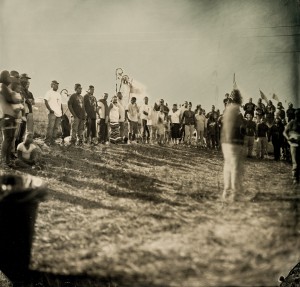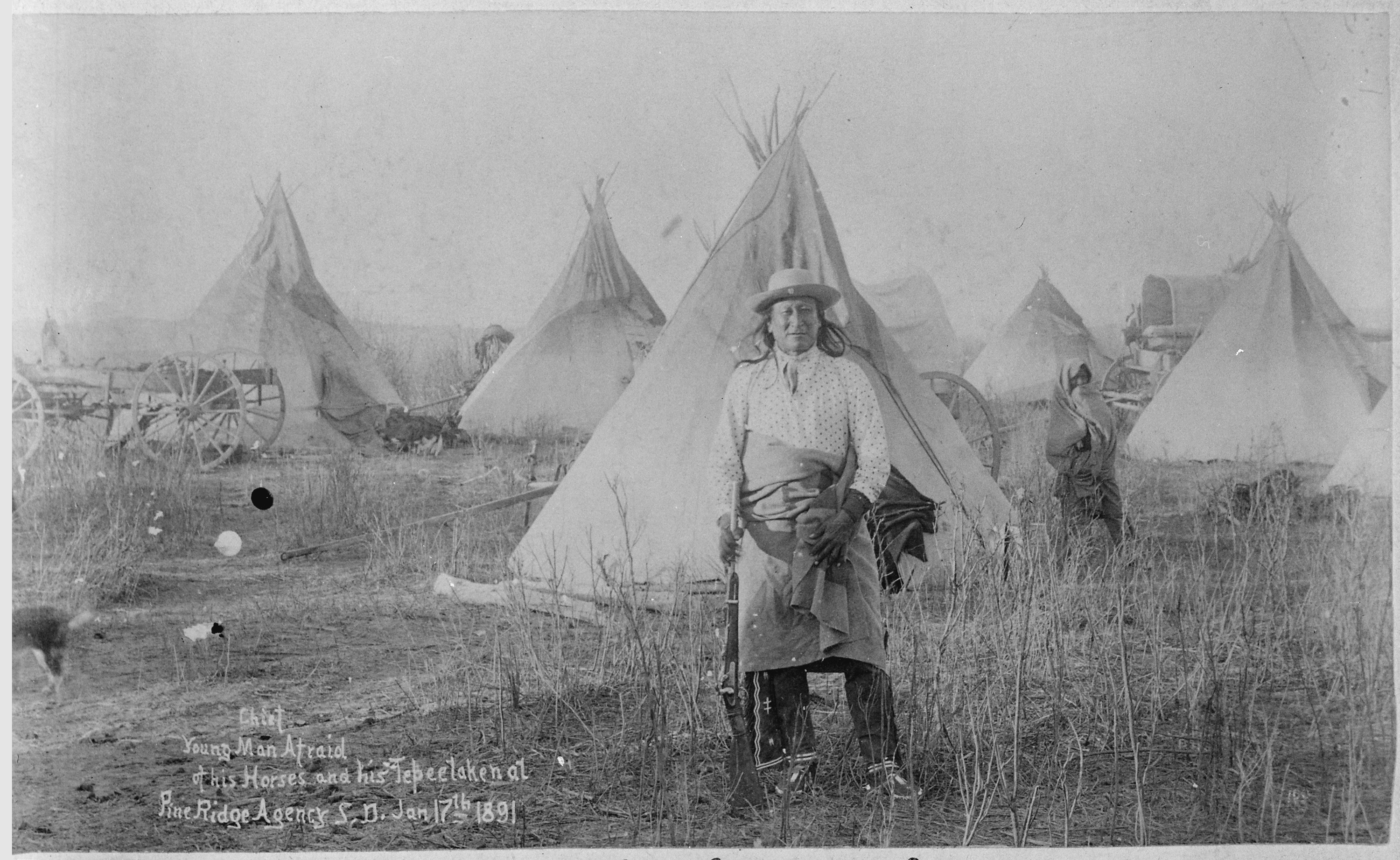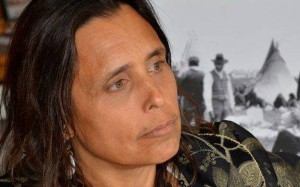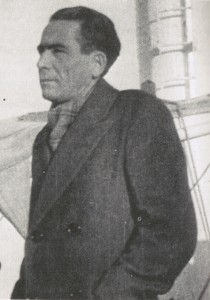HR COLUMN | Winona LaDuke: What would Sitting Bull Do?
What will Governor Dalrymple sacrifice for the Dakota Access Pipeline? Activist and former Green Party candidate Winona LaDuke reminds us that Standing Rock is only the most recent chapter in a long history of dispossession. “The Lakota people have survived many invasions.”

Dakota Access Pipeline Native American protest site, on Highway 1806 near Cannonball, North Dakota, August 15th, 2016. Photo Shane Balkowitsch, CC BY-SA 4.0
It’s 2016, and oil companies have come to Lakota territory. It is not the first time. But instead of the Seventh Cavalry or Indian police dispatched to assassinate Sitting Bull, it is the Dakota Access Pipeline, the National Guard, and the Morton County Sheriff. Standing Rock Chairman Dave Archambault was arrested by state police, with more arrests daily. I am watching history repeat itself, and wondering how badly Governor Dalrymple really wants that pipeline. Will he sacrifice people, civil rights and the environment to have it?
The land has a beauty which is unforgettable. If you close your eyes, you can remember the 50 million buffalo, the single largest migratory herd in the world. The Earth would vibrate under the pounding of their hooves, making the grass grow. There were once 250 species of grass. Today the buffalo are gone, replaced by 28 million cattle who require grain, water, and hay. Many of the fields are now in a single GMO crop, full of so many pesticides that the monarch butterflies are being wiped out. But in my memory, that old world remains.
If you close your eyes, you can remember the 50 million buffalo, the single largest migratory herd in the world.
We remember the theft of land and the taking of the Black Hills in 1877, a retaliation against Sitting Bull’s victory at the Battle of the Little Big Horn. In a time prior to Native Lives Matter, great leaders like Sitting Bull and Crazy Horse were assassinated at the hands of police. One truth: The Lakota people have survived many invasions.
As the Lakota attempted to stabilize their forced reservation society, the dams came. Over 200,000 acres on the Standing Rock and Cheyenne River reservations in South Dakota were flooded by the Oahe Dam, forcing not only relocation, but a loss of the Lakota, Mandan, Hidatsa, and Arikara worlds. Flooding destroyed 90 percent of the timber and 75 percent of wildlife on the reservations.
On Standing Rock a few years ago, Debbie Dogskin froze to death because she could not pay her propane bills. Yet she lived just south of the oil-rich Bakken Basin.
That is how a people are made poor. An intentional set of federal and state policies caused Native poverty. It is not that we chose poverty. Most residents of Standing Rock live below the poverty level. Lack of funding, a state which looks the other way and an inadequate infrastructure—highways without shoulders, decrepit medical facilities, or inability to heat homes—kills people. On Standing Rock a few years ago, Debbie Dogskin froze to death because she could not pay her propane bills. Yet she lived just south of the oil-rich Bakken Basin. So I ask: How will this pipeline help those people? Are we all just supposed to suck it up, Governor Dalrymple?
Having spent four years doing time in the Minnesota regulatory process for fighting the Enbridge pipelines, I am familiar with the white man’s regulatory process. That process excluded tribes. North Dakota’s process is worse, heavily controlled by oil companies. The formal term is “regulatory capture.” After all, oil pays the bills in the state, I get that. But the price is getting pretty high.

Young-Man-Afraid-of-His-Horses (Tashun-Kakokipa), an Oglala Sioux, standing in front of his lodge, Pine Ridge, South Dakota. 17 January 1891. Department of Defense. National Archives and Records Administration. Public domain.
Any state that would allow radioactive waste in landfills has been successfully blinded by some powerful interests. Women are commodified and murdered. North Dakota has more lawsuits about oil than active drilling rigs right now. Frankly, a pipeline which is too risky to be upstream from Bismarck is too risky for Standing Rock. The regulatory review of the Dakota Access pipeline was intentionally expedited and rigged. While that served the pipeline companies, in the end someone needs to do a full environmental impact analysis and statement.
Nationally, no one really noticed what was going on in North Dakota—until now. We all know that. People just flew over the state and made fun of the movie Fargo.
Unchecked, the Governor has neglected public health, militarized the state, and cast a blind eye to siccing dogs on Indians, arresting journalists, and attempting to marginalize 5,000 people, calling us protestors. I have to wonder why wanting clean water makes me a protester, and why the intentional contamination of water by fracking companies or corporate interests does not make those companies terrorist.
I can’t see how this is going to work out well for the state. North Dakota looks like the Alabama of the North. This looks like Selma. The last time this level of militarization in our region happened was in 1973 at Wounded Knee on Pine Ridge, when the government sent 15 armored personnel carriers, grenade launchers, flares, and 133,000 rounds of ammunition as well as the National Guard of five states; that was an expensive operation. That was then, but we remember. And, now, we’ve got dogs, aerial surveillance, the national guard, and arrests without bail. Native people have a very good memory, frankly, because history does repeat itself, and North Dakota, like other states, tries to forget us.
I am not sure how much North Dakota wants this pipeline. With oil rigs down 85% and a landscape littered with abandoned camps, why dig this line? In a country with crumbling infrastructure for water, sewer and energy (we have a D in infrastructure), why don’t we send these pipes to Flint, Michigan? Or make things work here?
Governor Dalrymple, I ask the question you might ask as well: What would Sitting Bull do? The answer is clear. A hundred years ago he said “let us put our minds together to see what kind of life we can make for our children…” The time for that would be now.
Winona LaDuke is an American activist, environmentalist, economist, and writer, known for her work on tribal land claims and preservation, as well as sustainable development. In 1996 and 2000, she ran for vice president as the nominee of the Green Party of the United States, on a ticket headed by Ralph Nader. In 1993, together with Indigo Girls Amy Ray and Emily Saliers, she founded Honor the Earth, a Native-led organization that strives to break the geographic and political isolation of Native communities and to increase financial resources for organizing and change.
Several of the around 2,800 Americans who joined the struggle against fascism in Spain had Native American roots. They include the following:
- Judson Mill Reynolds Briggs, b. October (May) 17, 1906, Philadelphia, Pennsylvania; 5th generation Seneca.
- John William Parks. (William Lewis Banks);
- Charles William Sanborn, (“Blacky”), b. March 7, 1902, Pittsburgh, Pennsylvania, Native American.
- Thomas Cox, Jr. b. Douglas, Alaska; Native American.
- Freeman Woodson Mani, b. May 23, 1909, Sisseton, South Dakota, Native American (part Sioux Indian).
- Ephraim Bartlett, Native American.
- Eugene Victor Gavin. (Victoriano, Eugenio Gavin), b. June 1, 1910 (1909), McCloud, Oklahoma, African American.
- Robert Owen Gavin. Born in Oklahoma on May 5, 1908.
- Oscar Hunter. Born in Orange, New Jersey, on May 22, 1908.
- Frank Edward Alexander, born on the Omaha Sioux Indian reservation in Nebraska on February 8, 1911.














